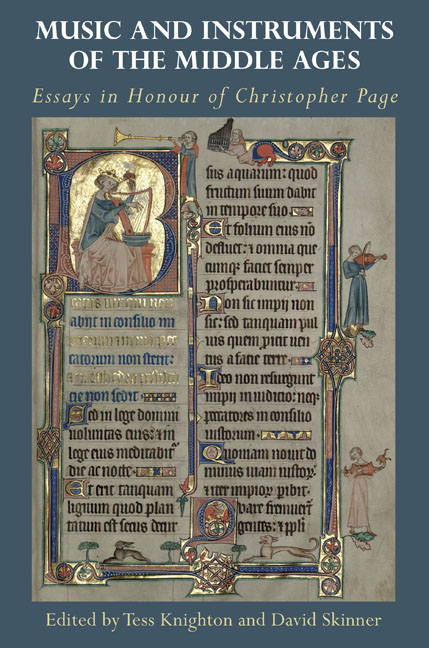Book contents
- Frontmatter
- Contents
- List of Illustrations
- List of Music Examples
- List of Tables
- List of Contributors
- List of Music Manuscript Sigla
- Acknowledgements
- Introduction
- SONGSTERS AND THEIR REPERTORIES
- CLOSE READINGS
- CREATING POLYPHONY
- MUSIC AS CULTURAL PRACTICE
- Works Cited
- Works by Christopher Page
- Index
- Tabula Gratulatoria
- Studies in Medieval and Renaissance Music
4 - Anonymous IV and the Antiqui
Published online by Cambridge University Press: 24 November 2020
- Frontmatter
- Contents
- List of Illustrations
- List of Music Examples
- List of Tables
- List of Contributors
- List of Music Manuscript Sigla
- Acknowledgements
- Introduction
- SONGSTERS AND THEIR REPERTORIES
- CLOSE READINGS
- CREATING POLYPHONY
- MUSIC AS CULTURAL PRACTICE
- Works Cited
- Works by Christopher Page
- Index
- Tabula Gratulatoria
- Studies in Medieval and Renaissance Music
Summary
THE GARLANDIAN REVOLUTION
The early modal notation system is notorious for its pervasive ambiguity, which renders transcription difficult and sometimes impossible. Two problems in particular stand out as resistant to resolution. First, we cannot always tell the rhythmic mode of a given composition or voice-part, because the notation allows it to be performed in multiple modes, without telling us which is preferred. Second, we cannot always be sure that a composition is conceived in a rhythmic mode to begin with, because the notation allows it to be performed in both measured and unmeasured versions, once again without indicating which is the one to be adopted.
These problems arise principally in texted voice-parts that move in single notes with one syllable each – the so-called cum littera notation. In the early modal system it was not possible to specify the rhythmic values of these syllable-carrying notes, for two reasons that are well known but which bear restating briefly. The first is that rhythmic values could only be securely notated by means of ligatures. But notes with syllabic underlay cannot be joined together into a ligature and stay texted at the same time, because ligatures can only carry one syllable. So either the notes merge into a ligature and gain notated rhythmic values at the expense of the syllables, or they stay separate and keep their syllables at the expense of rhythmic values. Cum littera notation represents the latter choice.
The second reason is that the free-standing notes of cum littera notation were not visually differentiated. Although some were meant to be performed long and others short, on parchment they all looked alike: nondescript square notes like the puncta of chant notation. For musicians who had nothing to go on but the notation, the obvious problem was how to be sure which note was long and which was short. It is this problem, the problem of notes that are uniform in appearance but multi-valent in performance, to which a solution would be formulated some time around 1260. The solution, as first presented by Johannes de Garlandia in his treatise De mensurabili musica, was to use different symbols for long and short notes. Henceforth they would have the shapes of the chant neumes virga and punctum, respectively.
- Type
- Chapter
- Information
- Music and Instruments of the Middle AgesEssays in Honour of Christopher Page, pp. 121 - 152Publisher: Boydell & BrewerPrint publication year: 2020

